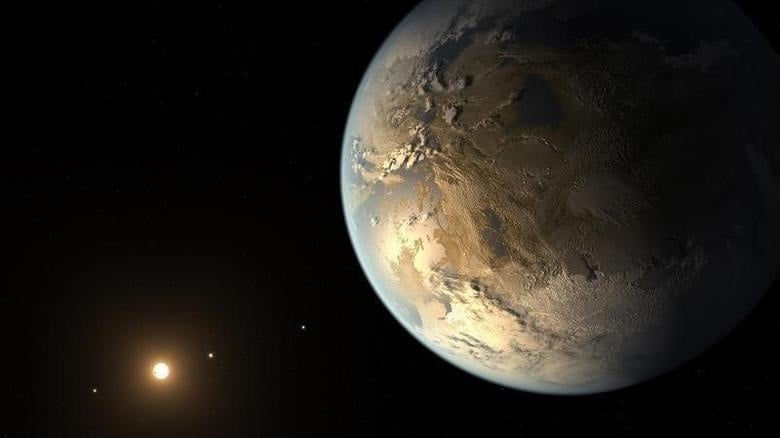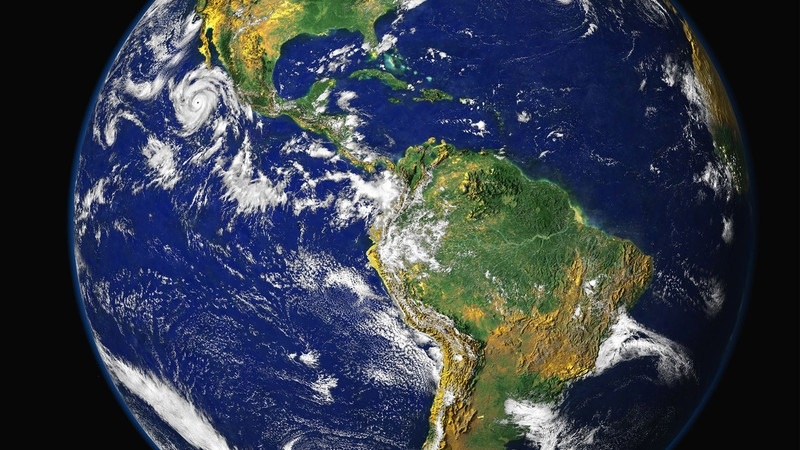Technology
Mini Magazine
- Monday, May 1, 2023 16:41 (GMT+7)
- 16:41 5/1/2023
Earth has the optimal distance from the Sun to have liquid water and moderate temperature, energy source for life to develop and protective magnetic field.
There are planets that have been described as “Earth-like” because they have similar gravity, are close enough to their star to be warm but not too hot, and may have liquid water. But in fact, Earth also possesses a host of other characteristics that make it particularly suitable for life.
The first element
“First, you need some kind of liquid, a medium where molecules can react,” Sara Seager, a planetary scientist at MIT, told OurAmazingPlanet . The liquid is where the starting ingredients, like DNA and proteins, can swim and interact with each other, carrying out the reactions that create life.
And the most promising liquid, and the source of life on Earth, is water. Water is an excellent solvent because it dissolves many substances. It also floats when frozen, unlike many other liquids, and helps prevent further freezing of the underlying layer.
 |
Liquid water was the first element that created conditions for life on Earth. Photo: Reuters . |
Assuming water sinks when it freezes, another layer of water on the surface will continue to freeze and sink, and eventually all the water will freeze, stopping the chemical reactions that give rise to life.
Astronomers searching for extraterrestrial life typically focus on planets in the “habitable zone” around their host stars. In this zone, planets are neither too hot nor too cold, and liquid water could exist on their surfaces.
Earth is a typical "golden" position, lying in the habitable zone around the Sun. If Earth's orbit were any farther or closer, the planet would be a cold desert like Mars or a furnace like Venus, and life would not arise.
Of course, alien life could play by different rules than those on Earth. A growing number of astrobiologists are suggesting that we look beyond the usual “golden” spots. Liquid water doesn’t currently exist on the surface of Mars or Venus, for example, but it may have existed at one time. Life could have evolved at that time, then fled to safer places, such as underground, or gradually adapted to the environment as the planet became more hostile, as some extremophiles have on Earth.
 |
Earth is in an ideal position relative to its host star to have a temperature that is neither too hot nor too cold. Photo: Reuters . |
Additionally, other solvents could harbor life. "Saturn's moon Titan has liquid methane and ethane," Seager says.
Additional Features of the Earth
Second, life requires energy. The most obvious source of energy is the host star. On Earth, sunlight drives photosynthesis in plants. In turn, the nutrients produced by photosynthesis fuel much of life on Earth.
However, many organisms on Earth also survive on other energy sources, such as chemicals from deep-sea hydrothermal vents, so energy is not as scarce as solvents.
With all the ingredients in place, life still needs time. Planets need host stars that can sustain life, providing heat and energy for at least a few billion years, long enough for life to evolve, as is the case with Earth.
Some stars only live a few million years before dying. “But life can start very quickly, so the age of the star doesn’t matter that much,” says Jim Kasting, an astrobiologist at Pennsylvania State University. Earth, for example, is about 4.6 billion years old. The oldest known organisms first appeared on Earth about 3.5 billion years ago, meaning life has been evolving for 1.1 billion years or less.
 |
The tardigrade, or water bear, is a creature that shows that life can form in harsh and extreme conditions. Photo: Shutterstock . |
More complex life forms took time. The first multicellular animals did not appear on Earth until about 600 million years ago. Because both the planet and the Sun have existed long enough, higher forms of life, including humans, have had time to evolve.
There are other details that contributed to life on Earth, such as the stability of the Sun's radiation compared to other host stars, and the magnetic field that protects the planet from storms of charged particles from the Sun. The host star's violent bursts of radiation could have wiped out fragile life in its early stages.
"But researchers are constantly rethinking these factors and their true importance. We're trying to be more open-minded and find the gray areas where life could arise," Seager said.
Earth remains the only planet known to support life, due to a unique combination of factors. However, humans may one day discover other planets with similar properties or discover other ways in which life could arise in the universe.
Big Questions - The Universe
The book deals with fundamental issues in natural science, in the form of discussing 20 questions about astronomy and the universe such as: What is the universe? How big is the universe? Why do planets always orbit?...
Hoang Nam
universe earth life sun water temperature
You may be interested in
Source link







![[Video] Forecast of benchmark scores of mid-ranking universities to drop sharply](https://vphoto.vietnam.vn/thumb/1200x675/vietnam/resource/IMAGE/2025/7/18/be12c225d0724c00a7e25facc6637cb9)
























































































![[Infographic] In 2025, 47 products will achieve national OCOP](https://vphoto.vietnam.vn/thumb/402x226/vietnam/resource/IMAGE/2025/7/16/5d672398b0744db3ab920e05db8e5b7d)







Comment (0)